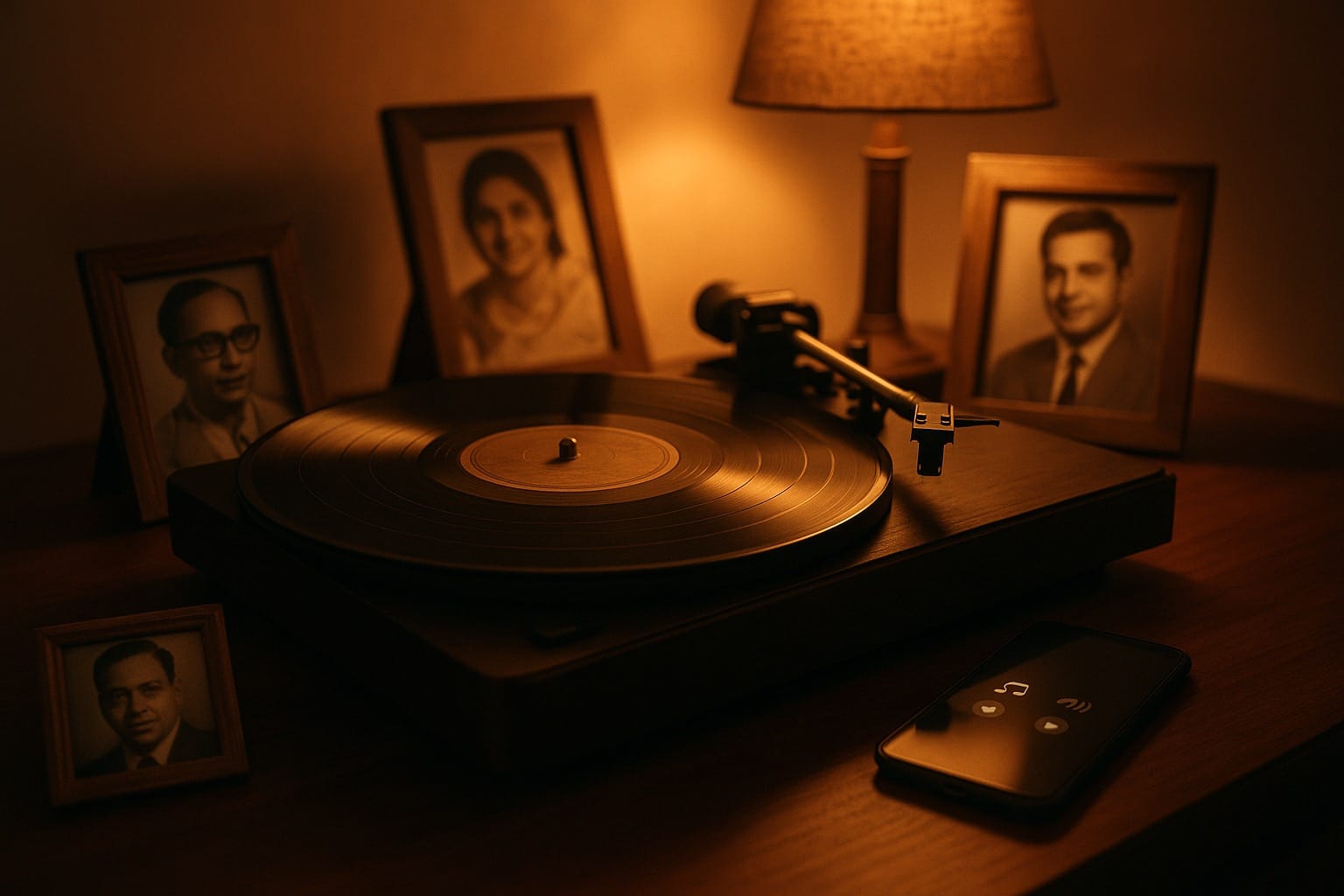The Evergreen Code II: Why Every Generation Returns to Its Own Golden Age of Sound

What nostalgia, memory, and identity reveal about why old songs never truly grow old.
The Golden Loop
Every generation believes the music of its youth was the best.
Scroll through any comment thread beneath a classic track—“They don’t make songs like this anymore,” someone writes, and thousands agree. From Mumbai to Manila, Cairo to Colombo, the refrain is the same.
It’s more than nostalgia. Science shows that the music we hear in our formative years imprints on the brain’s emotional circuitry. The combination of predictability, rhythm, and memory triggers dopamine and oxytocin, binding melody to meaning. In a noisy world, familiarity feels like home.
The Sound of Asabiyyah
Ibn Khaldun, centuries before modern sociology, called it asabiyyah—the social cohesion that gives rise to civilizations. Every culture’s golden age of sound mirrors its strongest sense of unity.
For India, it was the age of Naushad, Hasrat Jaipuri, Rafi, Lata, and Mukesh—artists who scored the heartbeat of a young republic. In Sri Lanka, Radio Ceylon’s broadcasts carried Sinhala, Tamil, Hindi, and English songs to every village, a single frequency binding a diverse island. When cohesion was high, the music was honest, melodic, unhurried.
The decline of that integrity in music often foreshadows the decline of cultural confidence itself.
The Algorithm and the Amnesia
Today, streaming platforms feed us abundance but erase continuity. Algorithms privilege engagement, not lineage. Music is no longer an inheritance but a feed—ever-refreshing, ever-forgetting.
The result? Nostalgia spikes. In the chaos of new sounds, the human brain seeks pattern and moral recall. We turn back to melodies that told stories, not slogans. Songs that narrated struggle, love, and loss—not product launches.
When the signal becomes noise, the past becomes sanctuary.
Songs as Moral Anchors
Great music once taught more than it sold. Hasrat Jaipuri wrote about love with decency; Bob Dylan sang of conscience; Clarence Wijewardena turned simplicity into philosophy. These songs carried moral code disguised as art.
Compare that to today’s pop economy: beats replace meaning, shock replaces substance, virality replaces virtue. When culture confuses volume for value, melody forgoes its duty as a teacher.
Why the Old Still Outsings the New
When families gather, playlists still drift back to the black-and-white era. Not because we resist change, but because those songs remind us who we were before we started performing for algorithms.
Old music survives because it is rooted in integrity.
It was composed for listeners, not metrics; for memory, not marketing.
To call a song “evergreen” is to admit that truth never needed remixing.
The Final Note
To love an old song is not to escape the present.
It is to remember what made us human—when melody mirrored morality, and rhythm reflected restraint.
Perhaps the real “Evergreen Code” is not musical at all.
It’s cultural: harmony without haste, expression without excess, art without agenda.
About the Author
Alfie Ameer is the Founder & CEO of Vonfidel Group, Chair of VONFIDEL K9 & Vonfidel Ranch, and Founder of Cognisive Consultants — a boutique firm specializing in digital strategy, ethics, and intelligence reform.
Publication Note: This article, The Evergreen Code II: Why Every Generation Returns to Its Own Golden Age of Sound, is the original and canonical edition published on Insights by Cognisive Consultants.
It forms the second installment in the Evergreen Code series, following The Evergreen Code (I): Why Classic Hindi Film Music Still Outsings the Present.
This essay is also syndicated on Medium and Substack, but this version is the official and canonical publication under Insights by Cognisive Consultants.
© 2025 Cognisive Consultants · A Vonfidel Group (VFG) Company

